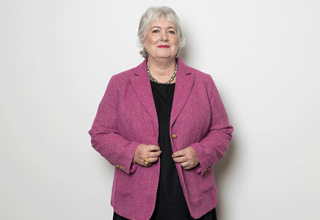Evidential burden and clear conditions: Cable Bay Wine prosecutions on appeal

Evidential burden and clear conditions: Cable Bay Wine prosecutions on appeal
Wednesday 30 March, 2022
Cable Bay Wine (‘Cable Bay’), and its Waiheke Island vineyard and winery activities, have been the subject of multiple resource consent and enforcement proceedings. In the latest High Court decision, Auckland Council appealed the District Court’s findings on two prosecutions against Cable Bay. Those prosecutions related to various events in 2018, alleging Cable Bay had exceeded the noise limits imposed in the conditions of its land use consent for its vineyard activities. This decision is important as it determined a legal interpretation issue on the appropriate meaning to give to unclear or ambiguous terms in a district plan definition and condition of consent.
The decision also considered the extent to which adjustments can be made to noise recordings taken for the purposes of monitoring compliance with permitted standards in district plans or conditions of consent. This is highly relevant to consenting authorities when gathering evidence to prosecute exceedances of noise limits, given that there is limited case law on this matter.
Prosecution 1: the preliminary ruling on meaning of “on another lot”
The main issue in the charges relating to the alleged offences in March and June 2018 concerned the location where noise recordings were taken, and if that was consistent with the condition of consent. The condition required the noise levels of Cable Bay’s activities to be “measured 20m from any adjacent dwelling or visitor’s facility (on another lot) …”. Cable Bay’s vineyard did not occupy the entire property; a small part was subject to a leasehold estate with its own title and let separately from Cable Bay’s activities. This is where the council officer took the recordings that led to the March and June charges.
The definition of “lot” in the District Plan was ambiguous. The District Court judge held “on another lot” meant “on another property”, meaning that the recordings could not be used to prove the charges. The Council appealed on the grounds that the District Court should have adopted a purposive interpretation, rather than limiting the definition to dwellings on a separate title.
The High Court considered that the purpose of the condition was to protect people in nearby dwellings from excessive noise, so it did not matter that the leasehold area was not on a separate title. The High Court held that the leasehold area was “on another lot”.
Prosecution 2: adjustments of noise recordings
The second appeal concerned whether the District Court erred when determining that adjustments made by the council officer to the recording to factor in bass levels and cricket noise were in accord with the New Zealand Standards for noise assessments, and whether the loss of the recording was a relevant matter.
The High Court found that the adjustment made by the council officer for the bass elements of the music (or ‘special audible characteristics’) was a plausible measure and that the District Court should have taken into account the fact that both Auckland Council’s and the Cable Bay’s respective noise experts concurred with this adjustment. It was also irrelevant that the original recording had been lost, because the adjustment for special audible characteristics still required a subjective assessment from the officer.
However, the High Court disagreed with the adjustments made by the Council officer for residual sound, such as the cricket noise. The District Court found that there was real doubt as to whether Cable Bay exceeded its noise limit on the night of the recording, because the cricket noise made a considerable contribution to the noise levels and experts could not agree as to the appropriate reduction to make to account for this. The High Court agreed with the District Court’s approach. Auckland Council could not establish Cable Bay’s exact noise contribution to the overall recording, so had not met the burden of proof.
Further thoughts
When collecting evidence for enforcement proceedings, territorial authorities can make adjustments to noise recordings where appropriate and consistent with the New Zealand Standards. However, when monitoring compliance, they should select locations and environmental conditions which provide for the most accurate and clearest recording to ensure that their evidence satisfies the burden of proof beyond reasonable doubt.







